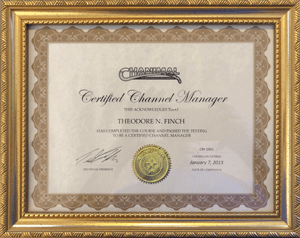Marketing Plan Template
Following is a template that will help you outline and prepare your marketing plan. The descriptions explain the content that should be included. See the sample marketing plan for an example of what this content looks like.
I. Executive Summary
1. The executive summary should encapsulate the entire plan within a few pages.
II. Situational Analysis
A. Product Overview
1. Review the product and the category.
B. Market Segmentation
1. Identify the various target market segments and how the product is currently situated. This section might include a price/performance chart.
C. Product Offering
1. Explain each of the company’s products and how they address the needs of their specific target audience.
D. Market Size
1. You may elect to compile information from PC Data, IDC, and other analyst sources to determine the number of current and potential buyers in your respective target markets.
E. Market Share
1. PC Data and trade magazines often contain sales figures from each of the competitive products. From this type of information, you can approximate the percentage of the market that you own. You may wish to include visual pie charts showing the market percentage of each player.
F. Growth Potential
1. Analyst information from primary research is often required to determine the market trends which indicate areas of potential growth. There are several organizations that produce well-documented reports on specific upcoming markets. Check the links section for possible sources.
G. Competitive Environment
1. List the specific known competitors and their respective positions and current plans. You may check a competitor’s collateral pieces, Web site, Adscope, distributors, analyst, friends inside the company, tracking sources and clipping services to discover the plans of your competitors.
H. Gaining Market Share
1. A 10,000-foot preview of the proceeding tactical plan to increase market share–either by developing new products, new markets, or recruiting your competition customer base.
I. Positioning
1. Once you have analyzed all of the previous information, you are ready to determine your position. This is your finale that contains your “why to buy” for each product. This section should also contain a chart showing your product’s positioning in regards to the target market segments and the competition.
III. Tactical Marketing Plan
1. The tactics further refine the overall strategies and show precisely how to meet the overall strategic objectives.
A. Organizational Strategies
1. Consolidation Strategies – each of the existing products should be evaluated for possible consolidation or growth according to the following approaches.
i. Harvesting (gradual decrease in company support for a product)
ii. Pruning (eliminate support for certain market segments)
iii. Retrenchment (continue to offer the same product but retreat to the strongest line)
iv. Divestment (sell-off weak fit products)
2. Growth Strategies
i. Market Penetration (better ingress of existing markets)
ii. Product Development (either changing the product or its perception)
iii. Market Development (finding growth in new markets)
iv. Diversification (introducing new products)
B. Marketing Mix
1. Product
i. Includes development features, positioning, packaging, and format
2. Price
i. Price Matching
ii. Price Making
iii. Introductory Penetration Pricing
iv. Upgrade Pricing
v. Pricing Perceptions
vi. Special Pricing (NFR, educational, etc.)
3. Placement
i. Placement is the selling and distribution portion of the Marketing Mix. This discussion should cover both push and pull campaigns, sell-in and sell-through suggestions and support materials. Resources should also be discussed.
4. Promotions (every mechanism designed to stimulate demand)
i. Public Relations
ii. Online Marketing (Web site)
iii. Advertising
a. Mass Media (Display, TV, and Radio)
b. Card Decks
c. Direct Response (Mail, Fax, E-mail, Bundle offers)
d. Event Marketing (trade shows, seminars, training)
iv. Business Development
a. Alliances via technology (integration of products, ole links, etc.)
b. Marketing alliances (share leads, trade show space, joint advertising, bundles, cross-rep recommendation, etc.)
IV. Summary
1. A final summary of the strategies and tactics to achieve financial success while meeting the needs of the target market segment.
V. Appendix
A. Media Schedule
1. This plan forecast one of the most expensive portions of demand creation, the advertising plan. It outlines a well-designed method to influence the target market segments. It includes a tracking mechanism with tripwire contingencies that correspond to profitability.
B. Budget
1. This should be as detailed as possible and should allow some flexibility for unseen positive opportunities. The main purpose is to forecast the capability to execute with a remaining profit.
C. Gantt Chart or Similar Process Plan
1. The entire document is designed to accurately create this one document timeline that demonstrates how every strategy and tactic is implemented. This is where the rubber meets the road.
C. Sales Projections

